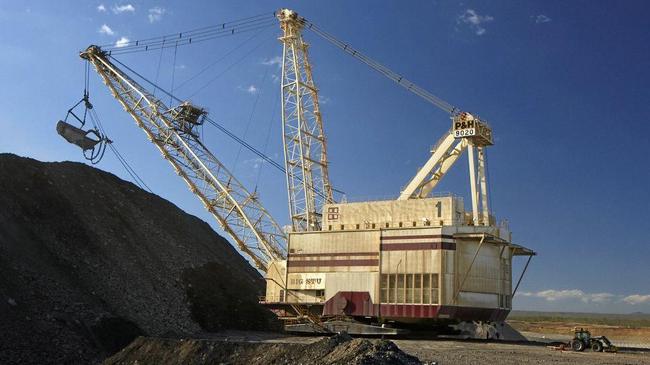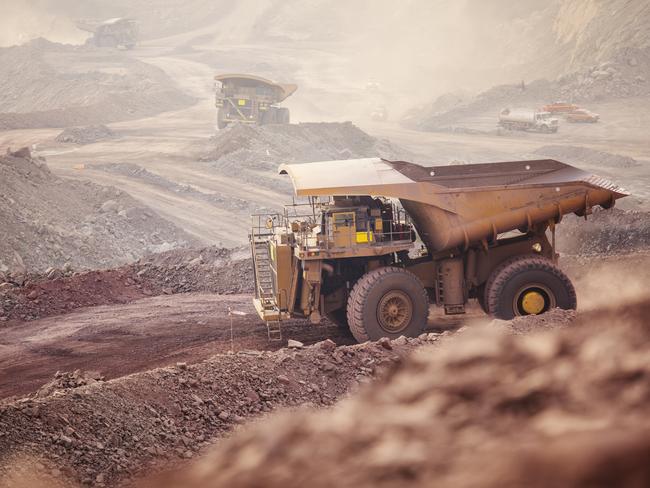Duane Paul Smith files $2.3m lawsuit against Hail Creek Coal
A Queensland mine operator is embroiled in a multimillion dollar legal battle after a former worker filed a lawsuit claiming he suffered permanent damage, costing him a high paying role.

Mackay
Don't miss out on the headlines from Mackay. Followed categories will be added to My News.
A Bowen Basin operator is embroiled is a legal battle after a former worker filed a $2.3m lawsuit claiming he has suffered permanent damage to both arms, costing him a high paying mining job.
Duane Paul Smith alleged he is now relegated to part time light duties, earning $600 per week – a steep drop from the $2000 plus he was earning as a heavy diesel fitter for Hail Creek Coal.
His former employer has admitted the 46-year-old suffered some injury, but alleges the claims “do not match up with available evidence and does not accord with expert medical opinion”.
In documents filed in the supreme court Mr Smith alleged his work involved heavy and prolonged repetitive tasks servicing, maintaining and repairing the mine’s heavy vehicles and as such he had to use a variety of high-powered, handheld vibratory tools, which he alleged “was heavy and produced high frequency vibrations”.
“As a result of prolonged and repetitive exposure (Mr Smith) experienced symptoms of pain and weakness with both hands and arms,” the court claim alleged.
Mr Smith alleged he “was regularly required to contort himself into confined spaces to use tools … to position and use tools above his head … use tools with fully extended arms … (and) operate tools during the course of each shift for extended periods”, which could extend from 30 minutes to 60 minutes at a time.
Hail Creek Coal denied these claims, alleging the power tools were not heavy and the operation was “occasional, infrequent and for short periods of time”.

Mr Smith is suing the mine operator for $2,346,264.74, plus interest and costs, alleging it failed to assess the vibrational forces exerted by each handheld power tool, the risk of injury each task workers were required to do and the risk of injury from the totality of the tasks.
He further says the company should have established and enforced a system of proper task rotation so workers were not exposed to excessive vibration, alleging this led to injuries including bilateral carpal tunnel and thoracic outlet syndromes, post surgical complications, chronic progressive degenerative arthritis, headaches and a psychiatric injury.
But in its defence documents Hail Creek Coal argued any injuries Mr Smith suffered were limited to left and right carpal tunnel syndrome, thoracic outlet syndrome and major depressive disorder and anxious stress, stating these had been assessed and a notice of assessment had been issued.
“The assessed injuries are the only injuries for which (Mr Smith) is … entitled to seek damages against (Hail Creek Coal) under the act,” court documents state.
Mr Smith alleged his employment with Hail Creek was terminated in January 2022 “on the ground of physical incapacity due to his injuries” and he was now unsuited to work in the mining industry – he is pushing for $1m in future economic loss as part of his claim.
Hail Creek Coal said the court must determine the liability issue in relation to the claim, alleging the sums claimed did not reflect Mr Smith’s residual earning capacity and the work he is capable, suited and able to exercise.
It has further alleged the tools did not produce high frequency vibration and denied claims Mr Smith had to contort himself, use tools above his head, with fully extended arms or from 30 minutes to and exceeding 60 minutes.
The mine operator has denied allegations Mr Smith experienced symptoms of pain and weakness in both hands and arms because of prolonged and repetitive exposure to significant amount of vibration and strain.
Court documents show Hail Creek argued it had assessed the risk of injury and totality of tasks and provided appropriate equipment, including anti-vibration gloves, for Mr Smith to carry out his duties.
It further alleged there was a task rotation system in place to ensure workers were not exposed to excessive vibration.





